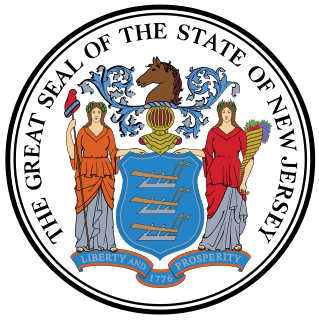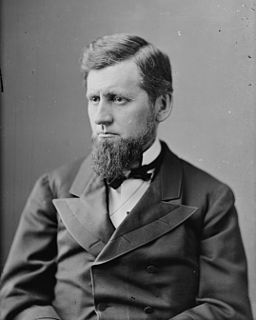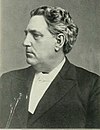
The United States presidential election of 1852 was the seventeenth quadrennial presidential election, held on Tuesday, November 2, 1852. Democrat Franklin Pierce, a former Senator from New Hampshire, defeated General Winfield Scott, the Whig nominee. This was the last election in which the Whigs served as the principal opposition to the Democrats.

Hiram Warren Johnson was initially a leading American progressive and then a Liberal Isolationist Republican politician from California. He served as the 23rd Governor of California from 1911 to 1917 and as a United States Senator from 1917 to 1945. He was also Theodore Roosevelt's running mate in the 1912 presidential election on the Progressive ticket.

The Pennsylvania gubernatorial election of 2006 was held on November 7, 2006 and included the races for the Governor of Pennsylvania and Lieutenant Governor of Pennsylvania.
The Republican Party of Pennsylvania, commonly known as the PA GOP, is based in Harrisburg in the United States state of Pennsylvania. It is affiliated with the Republican Party of the United States.

The 1914 New York state election was held on November 3, 1914, to elect the Governor, the Lieutenant Governor, the Secretary of State, the State Comptroller, the Attorney General, the State Treasurer, the State Engineer, a U.S. Senator and a judge of the New York Court of Appeals, as well as all members of the New York State Assembly and the New York State Senate, and delegates-at-large to the New York State Constitutional Convention of 1915.

The following offices were up for election in the United States State of New Jersey in the general election on November 3, 2009:

The Pennsylvania gubernatorial election of 1994 was held on November 8, 1994. The incumbent governor, Bob Casey, Sr. (Democrat), was barred from seeking a third term by the state constitution. The Republican Party nominated Congressman Tom Ridge, while the Democrats nominated Mark Singel, Casey's lieutenant governor. Ridge went on to win the race with 45% of the vote. Singel finished with 39%, and Constitution Party candidate Peg Luksik finished third, garnering 12% of the vote.

The United States Senate elections of 1902 and 1903 were elections which had the Democratic Party gain three seats in the United States Senate, but the Republicans kept their strong majority.

The Pennsylvania Gubernatorial election of 1986 was held on November 4, 1986. Democrat Bob Casey narrowly defeated Republican Bill Scranton III, in a race that featured two very high-profile candidates.

The Pennsylvania gubernatorial election of 1978 was held on November 7, 1978 between Republican Dick Thornburgh and Democrat Pete Flaherty.

The Pennsylvania gubernatorial election of 1966 was held on November 8. Republican Ray Shafer, the state's incumbent Lieutenant Governor, was elected to the state's highest office after holding off a charge from future governor Milton Shapp.

The Pennsylvania gubernatorial election of 1954 was held on November 2. In what is considered a crucial realigning election for the state, Democratic State Senator George Leader defeated Republican incumbent Lieutenant Governor Lloyd Wood by a surprisingly large margin.

The Pennsylvania gubernatorial election of 1950 was held on November 7. For the twenty-second time in twenty-five elections, the Republican candidate was victorious, but by a much smaller than usual margin. Superior Court Judge John S. Fine defeated Democrat Richardson Dilworth, the City Controller of Philadelphia.

The 1924 United States presidential election in Massachusetts took place on November 4, 1924, as part of the 1924 United States presidential election, which was held throughout all contemporary 48 states. Voters chose eighteen representatives, or electors to the Electoral College, who voted for president and vice president.

The Ohio general elections, 2014 were held on November 4, 2014 throughout Ohio, with polls opened between 6:30AM and 7:30PM. The close of registration for electors in the primary election was April 7, 2014, and the primary election day took place on May 6, 2014.

A general election was held in the U.S. state of Illinois on November 4, 2014. All of Illinois' executive officers were up for election as well as a United States Senate seat, and all of Illinois' eighteen seats in the United States House of Representatives. Primary elections were held on March 18, 2014.

The 1924 United States presidential election in New Jersey took place on November 4, 1924. All contemporary 48 states were part of the 1924 United States presidential election. New Jersey voters chose 14 electors to the Electoral College, which selected the president and vice president.

A general election was held in the U.S. state of New Mexico on November 4, 2014. All of New Mexico's executive officers were up for election as well as a United States Senate seat, and all of New Mexico's three seats in the United States House of Representatives. Primary elections were held on June 3, 2014.


























